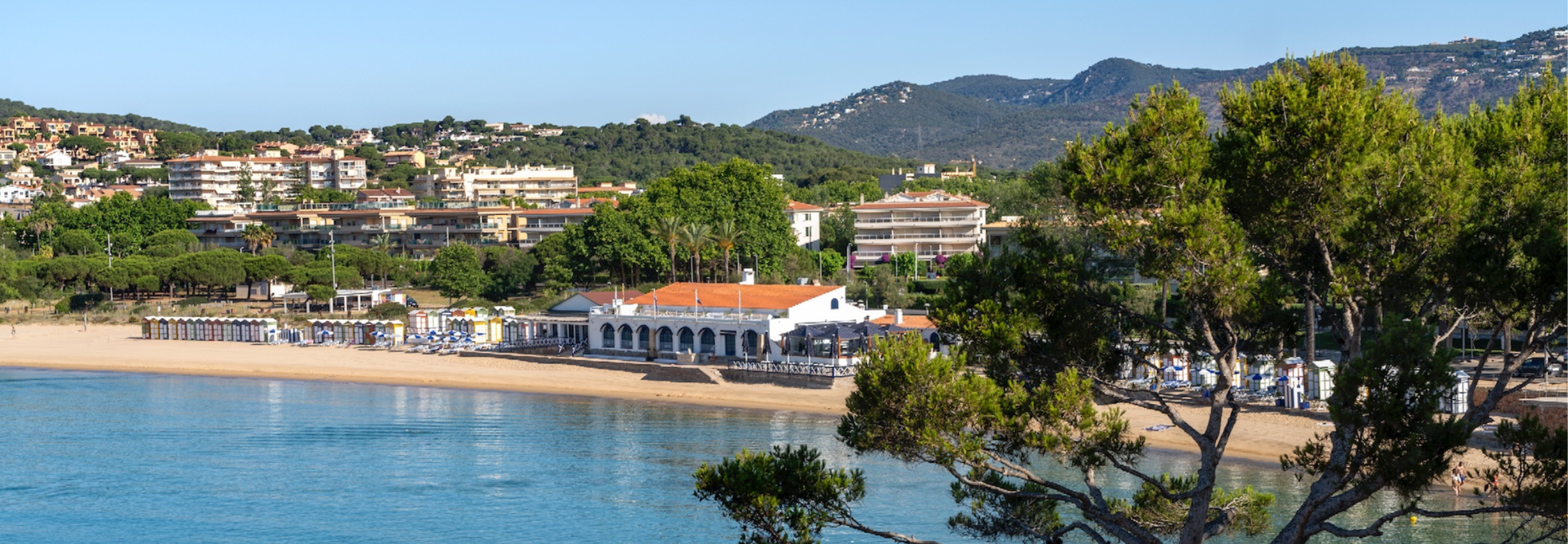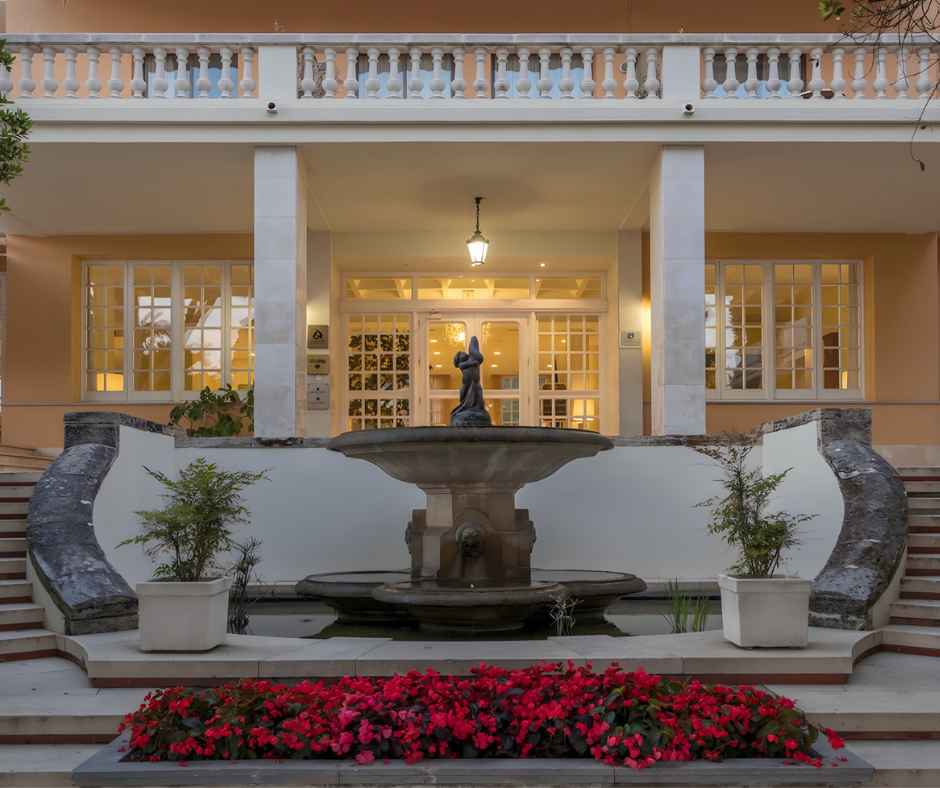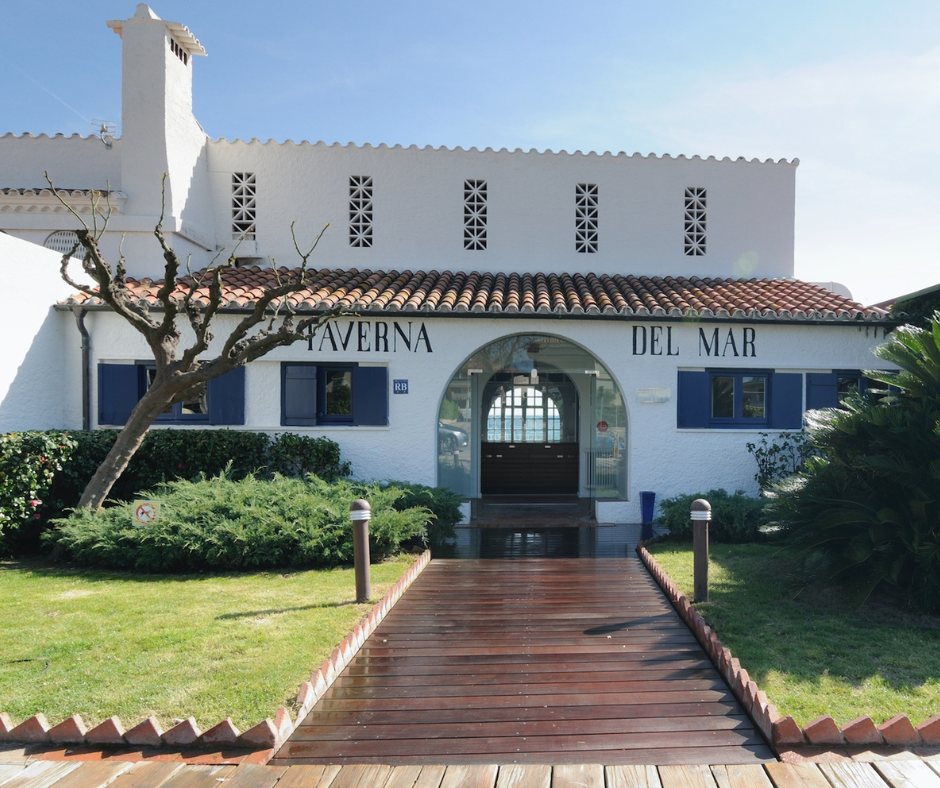
The bay of Sant Pol, the S’Agaró Hotel, and the Taverna del Mar
The serendipitous coincidence of a breathtaking landscape and balanced proportions make the bay of Sant Pol a true hallmark of S’Agaró.
In that place, Ensesa commissioned the architect Francesc Folguera to build the current building, after the fire that destroyed the previous one. It was opened on 18 July 1936 and had to close the following day, just after the outbreak of war, until it was revived in 1939. With the passing of time, and thanks to the founder’s son, Josep Ensesa Montsalvatge, La Taverna del Mar took its place as a reference point.
From Hotel Monumental, Hotel de la Platja and S’Agaró School to S’Agaró Hotel, a lengthy history from 1929 to the present day. It became the first major hotel on the Costa Brava, back when beach tourism did not yet exist, and has been the setting for countless public, economic, cultural and social events for almost a century.
PANEL 01

01.1 S’Agaró Hotel
The building was promoted by Antoni Montseny, builder of the Montjuic Palace, within the framework of the Barcelona Universal Exhibition in 1929. The architect was Pere Domènech y Roura, son of Lluís Domènech i Montaner.
Josep Ensesa bought it from the developer, and from Narcís Masó, one of Rafael Masó’s brothers. In 1935, he converted it into the S’Agaró School. During the war, it served as a hospital and, when it ended, Josep Ensesa reopened it as a hotel, changing its name to Hotel de la Platja. Since the late 1960s it served, occasionally, as an annex to La Gavina. In the 80s, a profound remodeling and several expansions were carried out. It opened as S’Agaró Hotel in 1986 and, today, it has 93 rooms.
Together with another family with a long hotel tradition, Josep Ensesa Gubert’s successors continue at the forefront of hotel management.
01.2 The bay of Sant Pol
Ensesa began operating the bathing huts on Sant Pol beach on July 10, 1920, with a round-trip bus service from Sant Feliu de Guíxols, shower service, and rental of huts and “swimsuits at reduced prices”. The business worked, and in the programs of the following summers, all types of parties, fireworks, festivals, cucaña games, bar service and dances were also held at the baths.
The structure of those first years was consolidated with the construction of the Restaurant dels Banys building, inaugurated on June 9, 1929. Unfortunately, in November 1935 a fire reduced most of the Masó building to ashes, which had died on July. Ensesa commissioned the reconstruction of the Restaurant to Francesc Folguera.
It was inaugurated on July 19, but the outbreak of war, the day before, caused the facilities to be closed the day after the inauguration.


01.3 La Taverna del Mar
This location is a jewel of Catalan Modernism, cataloged as a Cultural Asset of Local Interest. Founded in 1936, the restaurant has always stood out for its beauty, location and its seafood proposal. In 2014 it underwent a renovation process and with the help of Romain Fornell, gastronomic advisor of Hostal de la Gavina, he launched a new gastronomic proposal with the aim of offering a quality product and a unique experience to the Costa Brava.
The restaurant offers a 100% Mediterranean menu with the best wild fish, fresh seafood and a wide selection of rice dishes. All paired with a winery with a great selection of wines and sparkling wines.
